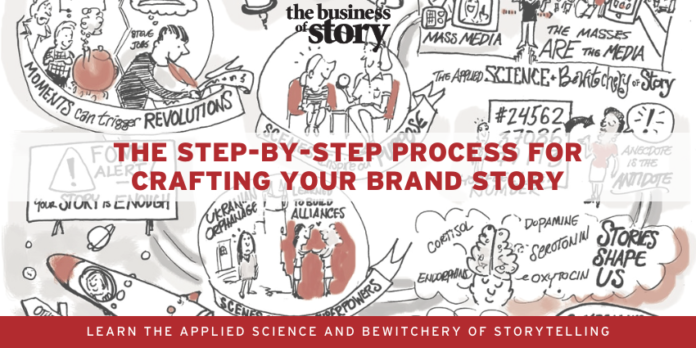Stories are the foundation of human communication. They allow us to give meaning to our experiences, share lessons and forge connections. When brands use stories well, they reveal an alternative future for the customer in which they are able to “Think Different” (Apple) or to meet “The Man Your Man Could Smell Like” (Old Spice).
For brand stories to connect with customers and help them progress through the buying funnel, marketers need both relevance and consistency across product lines and channels. The large, meta-story of a brand and its values provides the initial hook, in the same way that the first chapter of a book or scene of a film grabs an audience. The story must then sustain interest with its plots and subplots to keep people reading, watching, or moving along the buying funnel.
Start by understanding the core story elements and how they apply in marketing. The elements of story are:
- Character – In marketing, characters are customer personas, the roles, segments and audiences marketers are trying to speak to
- Setting – The customer journey and where they are in it
- Plot – The wants and needs of the customer, as well as the values, viewpoints, and experiences customers bring with them as they move through their journey
- Conflict – The sources of customer resistance to the marketer’s solution
- Resolution – How the product or service overcomes resistance to solve the customer’s problem
Using these elements, marketers craft a brand story that captures a customer at a given moment in which they have specific wants and serves up messages that reveal one way to fulfill those wants.
The business of curation
So how does storytelling actually impact business?
Understanding the value of curation is a great first action step. As my friend Ishan Shapiro says, curation can be defined as “storytelling through the use of available knowledge, information and experience.”
This means that we go from merely aggregating media assets – video, text, sound, pictures – to building currency around experiences that have cultural, social and educational impact. And where companies are relevant in these contexts, market opportunities abound.
Charmin’s installation in Times Square, Dove’s Real Beauty meet-ups, Amex’s OPEN kiosks and HP’s innovation installations are all proving that branded content can provide an experience of real meaning and “shareability.” In each of these examples, a “metanarrative” spawns extensions whereby people are inspired to create their own media based on themes or topics related to these initiatives.
Holistic storytelling and branded experiences
Each of these brand initiatives applied an underlying theme or topic that resonates with people in their daily lives:
- Charmin explored the meaning of comfort by installing bathrooms in Times Square
- Dove broke down cultural mores around beauty with TV commercials and then extended the corporate narrative into other channels such as social media
- HP branded collaborative innovation by inviting prolific artists to create music with their fans (Disclosure: HP is a client though I did not work on the initiative mentioned)
- Amex redefined financial independence by listening to the needs of small business owners and providing them with tools to share
The story elements and narrative structure apply in distinct ways at multiple points in time along the customer journey and across channels. The high-level, brand story articulates the value the brand brings to customers. Brands make that value more specific through a customer story or stories that apply the value proposition to a specific persona or targeted audience. Another level down, brands craft nested micro-narratives that contextualize the value for each persona with their specific needs at distinct, pivotal moments in the customer journey. The story may likewise change slightly depending on the channel.
In this way, story provides a model for crafting messages that resonate.





























